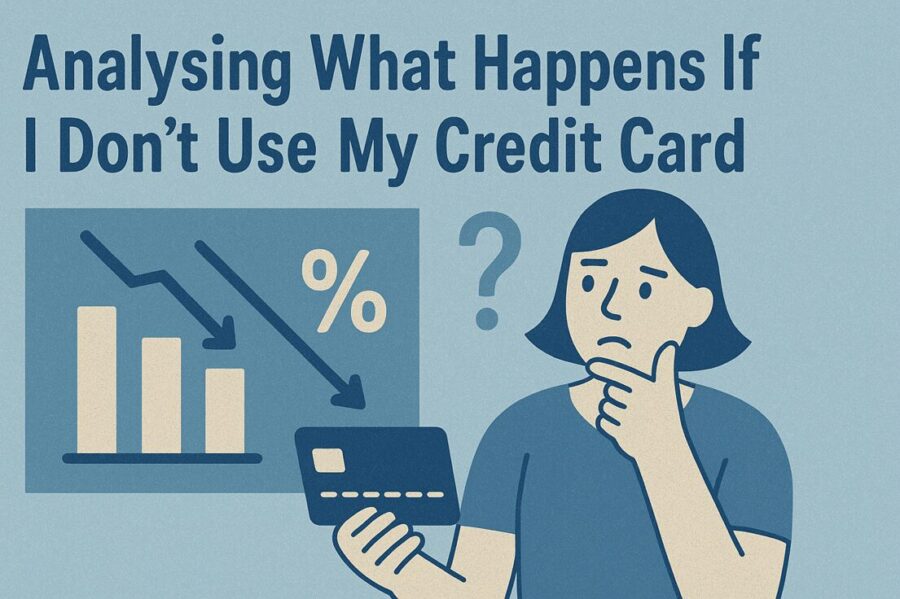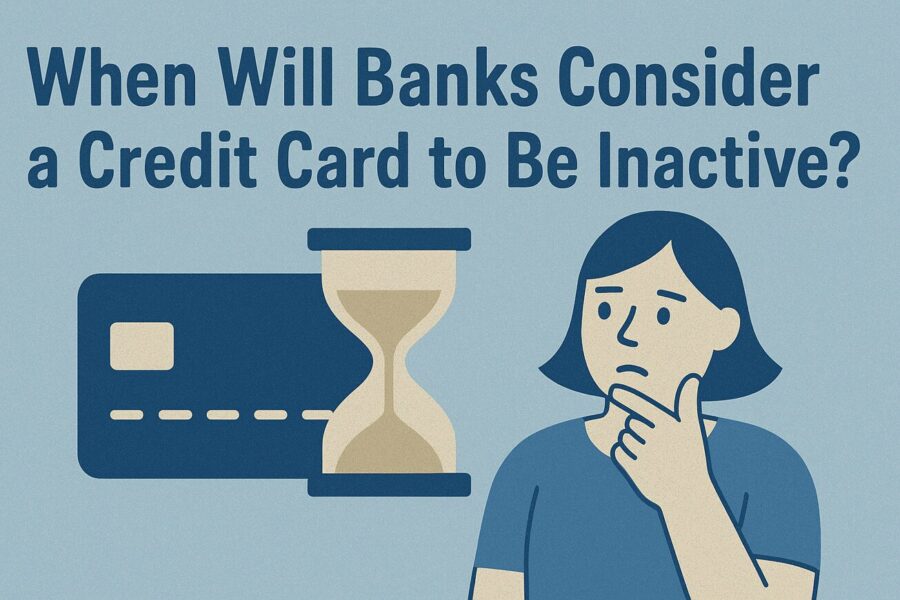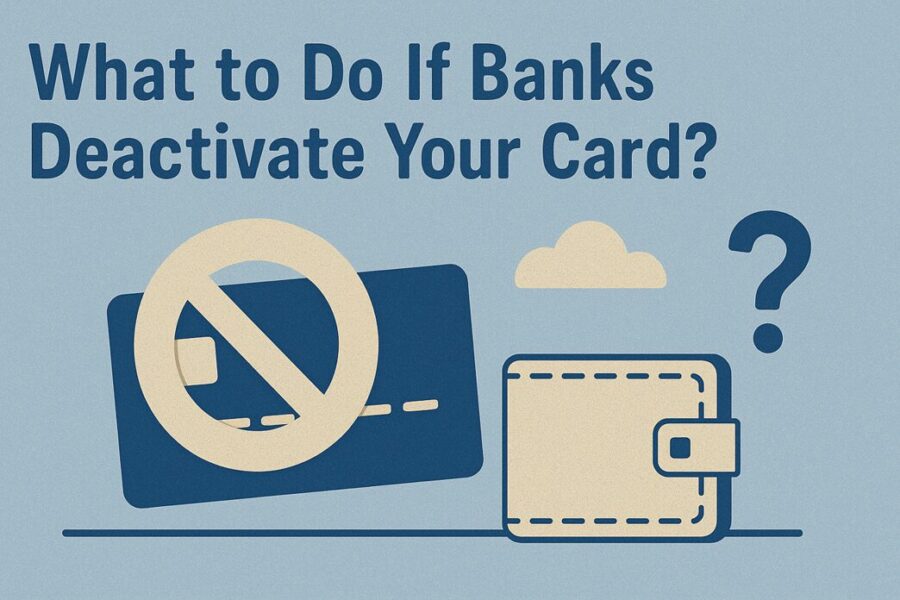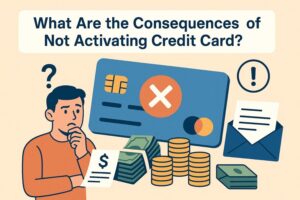Analysing What Happens If I Dont Use My Credit Card
- 23 Oct 25
- 9 mins

Analysing What Happens If I Dont Use My Credit Card
- When Will Banks Consider a Credit Card to Be Inactive?
- What Happens if I Dont Use My Credit Card?
- What to Do to Avoid Credit Card Deactivation?
- What to Do If Banks Deactivate Your Card?
- When Should You Deactivate a Credit Card?
- When Is Keeping an Unused Credit Card Worth It?
- How Can You Keep Your Credit Card Active Without Exceeding Your Spending?
- Conclusion
Key Takeaways
- If a card is unused for 6–12 months, banks may classify it as inactive and close the account. This can affect your credit utilisation ratio and lower your credit score.
- Even if you never use your card, issuers may still charge annual or inactivity fees, resulting in unnecessary costs.
- Not using your card may lead to loss of available credit and shortened credit history, both of which reduce your credit score strength.
- Using your card for small recurring payments like OTT or utility bills helps keep it active and maintains a positive credit record.
- If your card has high annual fees or duplicates another card, closing it can simplify finances. But if it’s fee-free or your oldest card, keeping it open benefits your credit score.
Have you ever wondered what happens if I dont use my credit card? Many people stash their cards away, thinking inactivity is harmless. The truth can be somewhat unexpected. Unused cards are not good for your credit rating as well as account closures or even limit your potential to borrow money at a later time. Understanding the consequences of an unused card is vital to responsible money handling.
By understanding the risks of not using your cards, you can make better decisions in safeguarding your credit health and preventing unnecessary financial losses. Let's continue reading to learn more in depth.
When Will Banks Consider a Credit Card to Be Inactive?

When no purchase or cash withdrawal is made using a credit card for a significant period, the credit card is generally considered inactive. Most issuers treat 6-12 months of non-usage as inactivity.
Even before that stage, card activation is vital in itself. Activation may involve customer-initiated steps such as PIN generation, modification of transaction controls, IVR confirmation, recorded calls to customer care, or SMS consent.
According to RBI guidelines, if a card is not activated within 30 days of issuance, the issuer must obtain OTP-based approval before continuing the account. After a card has gone idle, issuers have the right to close the account. This would lower available credit and impact credit history.
Let us take an example to get a better idea of it. A cardholder having a ₹1,00,000 limit who neglects the card for 9 months will have it flagged and shut down, even without any dues. This mere inactivity can drastically reconfigure one's financial profile.
What Happens if I Dont Use My Credit Card?
- Inactivity Fees
Some issuers apply inactivity fees if a card has not been used for 6 to 12 months. These charges motivate customers to keep their cards in use.
Not all companies enforce this, but the ones that do emphasise that in their conditions. Overlooking this information can contribute to incremental expenses that can render the card less useful.
- Account Closure
Issuers may close dormant cards to reduce fraud risks and manage their portfolio. An unused card is easier to overlook, which makes fraudulent activity harder to spot. Another benefit of closing an account is the ability of issuers to manage credit exposure.
- Rewards Forfeited
Inactive accounts may cause reward points or cashback balances to expire. Once the card closes, any unredeemed rewards are usually lost.
- Annual Fees
Annual charges apply regardless of usage. The cardholder will lose money if the rewards and savings do not exceed the annual fee. For example, if a travel card has a fee of ₹5,000 but offers only ₹3,000 worth of benefits, the account works at a loss.
- Credit Score Effect
Cancelling an unused card with a high limit can lower the available credit and shorten the credit history. Both reduce credit score strength. Experts suggest keeping utilisation below 30% of the total limit. A dormant card kept active may support this ratio.
- Debt and Interest
Outstanding balances continue to accrue interest even if the card remains unused. Failure to repay may add penalties and harm credit health.
What to Do to Avoid Credit Card Deactivation?
- Use for Small Purchases: It is simple to use your card for small expenses now and then. This keeps the account active and assists you in identifying unauthorised usage.
- Set Recurring Payments: Link your card to utility bills or subscriptions so that there is regular movement on the account. For instance, set a recurring OTT bill of ₹1000 on the card. This will keep the account active.
- Opt for Balance Transfers: Move dues from another card and convert them into instalments to maintain activity.
- Clear Dues Promptly: Pay bills on time, as delays or maxed-out limits may result in temporary suspension until payments are settled.
What to Do If Banks Deactivate Your Card?

- Contact the Issuer: Send a written request to your card issuer for reactivation. Emphasize your consistent repayment history and good credit profile as substantiation.
- Check Your Credit Health: Review your credit score to understand the effect of closure on your utilisation ratio. If there is a decline, take corrective steps such as timely repayments and maintaining low debt.
- Provide Required Documents: Banks may ask for self-attested copies of your PAN, ID proof, and address proof. Supplying these quickly speeds up reactivation.
- Initiate a Transaction: Once reactivated, carry out a small purchase to confirm activity. The processing time depends on the bank’s policy and card type.
When Should You Deactivate a Credit Card?
It is not necessarily a bad thing to deactivate a credit card. It can save money and unnecessary expenses in certain situations. Customers can think of closure in the following situations:
- High Annual Fees: If your card has an expensive annual fee but does not provide equal value, then it is better to close it. For example, paying ₹3,000 annually for a card left unused is a needless expense.
- Multiple or Duplicate Cards: Owning several cards can make financial management complex. Keeping 2 cards that share the same credit limit adds no advantage. Closing one of them can simplify your account structure.
- Large Outstanding Dues: If dues become unmanageable, balance transfer to a low-interest card may help. To prevent additional debt, close the old credit card account after transferring.
- Risk of Overspending: After transferring, the old credit card account can be closed to avoid further debt. Deactivation can assist you in keeping costs down while pursuing a strict budget.
When Is Keeping an Unused Credit Card Worth It?
- Keep Credit Utilisation Ratio Under Control
Unused credit cards add to your total available credit resulting that you can keep your credit utilisation ratio lower than the 30% recommended amount. To close the account may in fact add your account credit utilization ratio by reducing the total available credit which in some cases may negatively impact your credit profile and scores.
- Keep Credit History
If the credit card is one of your first or oldest accounts, keeping the account open means you can keep a longer credit history which strengthens your credit score.
- No Annual Fee - Advantage
Many people have credit cards with no annual fees and costs them nothing to keep it open. You can keep your credit card open with no affect to your budget. Apart to maintain your credit profile status.
- Emergency Backup
An idle card can act as a safety net in unexpected situations. Although it is not advisable to rely on credit for emergencies, having backup funds provides peace of mind.
- Rewards and Benefits
Certain cards offer perks like lounge access or insurance. Keeping such a card makes sense if the benefits outweigh the costs.
💡Use the PICE App for timely credit card payments and to use its rewards and benefits.
How Can You Keep Your Credit Card Active Without Exceeding Your Spending?
- Make Small Purchases: Use your card for minor expenses like a streaming subscription or a routine bill. For instance, paying your monthly electricity bill and clearing it before the due date keeps the card active without cost.
- Keep Reminders: Use a calendar or money management app to write down due dates. For example, you can set the notification to pay for a ₹350 online grocery once in a while through the card to ensure timely use.
- Update Contact Details: Keep your information current with the issuer to receive alerts about inactivity or potential closure.
- Use the Card Periodically: Even if a card is kept for emergencies, ensure at least one small transaction every few months. This maintains account activity and safeguards your credit score.
Conclusion
Leaving a credit card unused might seem harmless, but what happens if I don’t use my credit card can have lasting effects. Inactivity can prompt banks to close accounts, lower your credit score, or even lead to dormant account fees. Simple, occasional use, like paying a small bill or making a minor purchase, keeps your account active, protects your credit health, and ensures your card continues to serve as a reliable financial resource.


















